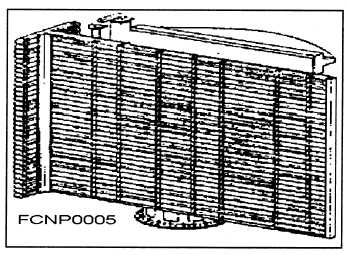Air-Search Radar
The primary function of an air-search radar is to
maintain a 3600 surveillance from the surface to high
altitudes and to detect and determine ranges and
bearings of aircraft targets over relatively large areas.
r a d a r:
The following are some applications of an air-
search radar:
Gives early warning of approaching enemy
aircraft and missiles, providing the direction
from which an attack could come to allow
time to bring antiaircraft defenses to the
proper degree of readiness and to launch
fighters if an air attack is imminent.
Observes constantly the movement of enemy
aircraft, once detected, to guide combat air
patrol (CAP) aircraft to a position suitable for
an intercept.
Provides security against attacks at night and
during times of poor visibility.
Provides information used for aircraft control
during operations that require a specific geo-
graphic track (such as an antisubmarine bar-
rier or a search and rescue pattern).
Together, surface- and air-search radars provide
a good early-warning system. However, the ship must
be able to determine altitude to effectively intercept
any air target. This requires still another type of radar.
3-D Radar
The primary function of a 3-D radar is to compute
accurate ranges, bearings, and altitudes of targets
detected by an air-search radar. This information is
used to direct fighter aircraft during interception of air
targets.
The 3-D radar is different from the air-search
radar in that it has a higher transmitting frequency,
higher output power, and a much narrower vertical
beamwidth. In addition, it requires a stabilized an-
tenna for altitude accuracy.
The following are some applications of a 3-D
Obtains range, bearing, and altitude data on
enemy aircraft and missiles to assist in the
guidance of CAP aircraft.
Provides precise range, bearing, and height in-
formation for fast and accurate initial position-
ing of fire-control tracking radars.
Detects low-flying aircraft.
Determines range to distant landmasses.
Tracks aircraft over land.
Detects certain weather phenomena.
Tracks weather balloons.
The modern warship has several radars. Each
radar is designed to fulfill a particular need, but may
also be capable of performing other functions. For
example, most 3-D radars can be used as secondary
air-search radars; in emergencies, fire-control radars
have served as surface-search radars. A 3-D air-search
radar is shown in figure 1-5.
Figure 1-5.—3-D air-search radar.
1-9


